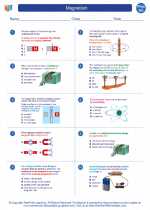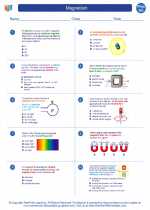Genotyping
Genotyping is the process of determining the genetic makeup of an individual by analyzing their DNA. This can involve identifying specific genetic variations, such as single nucleotide polymorphisms (SNPs), insertions, deletions, or other genetic mutations.
Importance of Genotyping
Genotyping is important in various fields, including medicine, research, and agriculture. In medicine, it can be used to assess an individual's risk of developing certain diseases, determine their response to certain medications, and guide personalized treatment plans. In research, genotyping is used to study genetic variations in populations and their association with specific traits or diseases. In agriculture, genotyping is utilized to identify desirable traits in plants and animals for breeding purposes.
Methods of Genotyping
There are several methods used for genotyping, including:
- PCR-based methods: Polymerase chain reaction (PCR) is commonly used to amplify specific regions of DNA for genotyping. This can include techniques such as allele-specific PCR, restriction fragment length polymorphism (RFLP) analysis, and quantitative PCR (qPCR).
- Sequencing: Next-generation sequencing (NGS) technologies allow for high-throughput genotyping by sequencing millions of DNA fragments in parallel. This includes methods like whole-genome sequencing, targeted sequencing, and exome sequencing.
- Microarray-based methods: Microarray technology enables the simultaneous genotyping of thousands to millions of genetic markers. This includes techniques like SNP microarrays and gene expression microarrays.
Applications of Genotyping
Genotyping has a wide range of applications, including:
- Medical Genetics: Genotyping is used to diagnose genetic disorders, predict disease risk, and guide treatment decisions in personalized medicine.
- Pharmacogenomics: By analyzing an individual's genetic variations, genotyping can help determine their response to certain drugs and optimize medication regimens.
- Population Genetics: Studying genetic variations in populations can provide insights into evolutionary history, migration patterns, and genetic diversity.
- Agricultural Genomics: Genotyping is utilized in breeding programs to identify and select for desirable traits in crops and livestock.
Study Guide
To effectively understand genotyping, consider the following study guide:
- Learn the basics of DNA structure and genetic variation.
- Understand the principles of PCR and its applications in genotyping.
- Explore the different genotyping techniques, including sequencing and microarray-based methods.
- Study the applications of genotyping in medicine, research, and agriculture.
- Review case studies and examples of how genotyping has been applied in various fields.
By mastering these concepts, you'll have a solid understanding of genotyping and its significance in genetics, medicine, and beyond.
.


